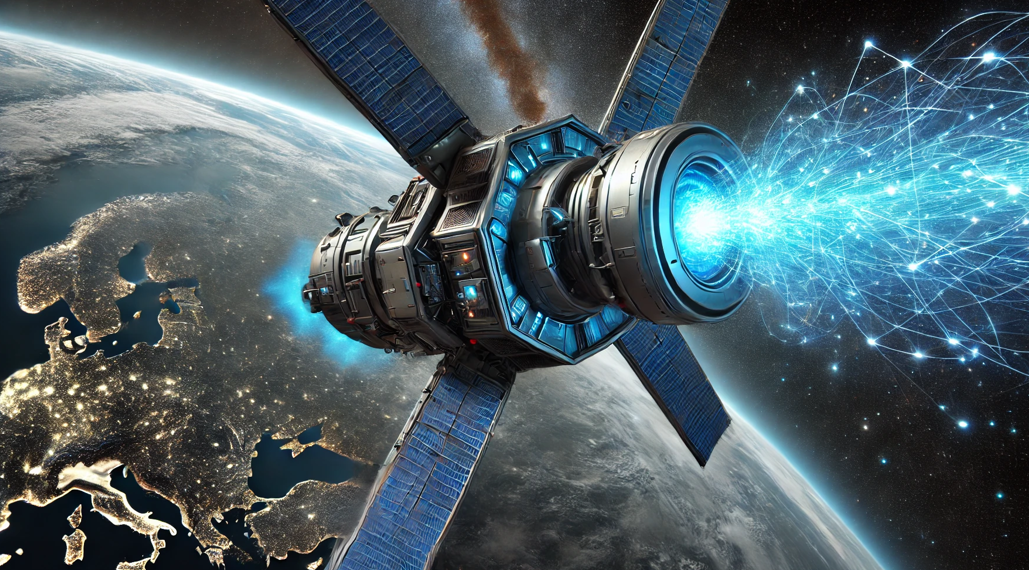South Korea is preparing to test its latest advancement in space propulsion with the launch of the KAIST-Hall Effect Rocket Orbiter (K-HERO) CubeSat in November. The mission will feature an AI-optimized Hall thruster, an electric propulsion system known for its efficiency in satellite operations. This breakthrough could not only advance commercial space missions but also lay the foundation for next-generation military space capabilities.
Hall thrusters, which use plasma propulsion, are highly efficient compared to traditional chemical propulsion systems. They require significantly less fuel while generating a steady thrust, making them ideal for long-duration missions. Used in projects like SpaceX’s Starlink constellation and NASA’s Psyche asteroid mission, Hall thrusters enable satellites to adjust orbits, mitigate space debris, and conduct deep-space exploration. Now, AI is poised to make them even more effective.
Developed by KAIST’s Electric Propulsion Laboratory, under the leadership of Professor Wonho Choe, this AI-enhanced thruster is designed to optimize performance prediction during the design phase. The AI model, trained on 18,000 data points generated through in-house numerical simulations, significantly reduces the trial-and-error process involved in traditional thruster development. This results in faster, more cost-effective production cycles while increasing the reliability of space propulsion systems.
“To rapidly develop highly efficient, mission-optimized Hall thrusters, it is essential to predict thruster performance accurately from the design phase,” the research team stated. Conventional modeling methods often fail to account for the complexities of plasma physics, leading to lower prediction accuracy. By integrating AI, KAIST researchers have improved prediction capabilities, achieving an average error rate of less than 10%. This represents a significant leap in propulsion efficiency and adaptability.
Potential Military Applications of AI-Enhanced Hall Thrusters
Beyond commercial and scientific applications, AI-driven Hall thrusters could play a vital role in military space operations. As space increasingly becomes a contested environment, nations are developing strategies for space dominance, reconnaissance, and defense. AI-powered propulsion could transform military satellite capabilities in several key areas:
-
Enhanced Orbital Maneuvering – Military satellites equipped with AI-driven thrusters could quickly reposition themselves to avoid detection, evade potential anti-satellite (ASAT) weapons, or gain optimal vantage points for surveillance and intelligence gathering. Rapid repositioning would provide an edge in countering space-based threats.
-
Persistent Surveillance and Reconnaissance – AI-optimized Hall thrusters could extend the operational life of surveillance satellites, enabling prolonged monitoring of adversary activities. Instead of requiring costly replacement missions, satellites could use highly efficient electric propulsion to maintain and adjust orbits for years.
-
Space-Based Defense Systems – Future military spacecraft may need to track and neutralize threats in orbit. AI-enhanced propulsion would allow defense satellites to quickly maneuver into position to counter enemy satellites or space-based weapons, playing a crucial role in space warfare scenarios.
-
Autonomous Swarm Satellites – With AI-driven propulsion, swarms of small, highly maneuverable satellites could be deployed for defense and communication networks. These satellite constellations could dynamically adjust formation based on evolving threats, ensuring uninterrupted military communication and intelligence capabilities.
-
Rapid Response and Orbital Deployment – AI-powered thrusters could be integrated into rapid-response military assets, allowing them to reach specific locations in space faster than traditional systems. In a crisis scenario, such technology would ensure that defense satellites could be positioned in high-risk areas quickly and efficiently.
A Step Toward the Future of Space Warfare
Since 2003, Professor Choe’s team has been at the forefront of electric propulsion research in South Korea. Their latest innovation places the country on the cutting edge of both commercial and military space propulsion technology. As nations increasingly focus on space as a strategic domain, innovations like AI-driven thrusters will be crucial for maintaining operational superiority.
The KAIST team’s AI model demonstrates a clear advantage in optimizing thruster performance, potentially reducing costs while increasing effectiveness. If adopted for defense applications, such technology could give military satellites unprecedented agility, survivability, and endurance. In an era where space is no longer just a scientific frontier but a battleground for geopolitical influence, propulsion advancements like these could shape the future of defense strategy.







